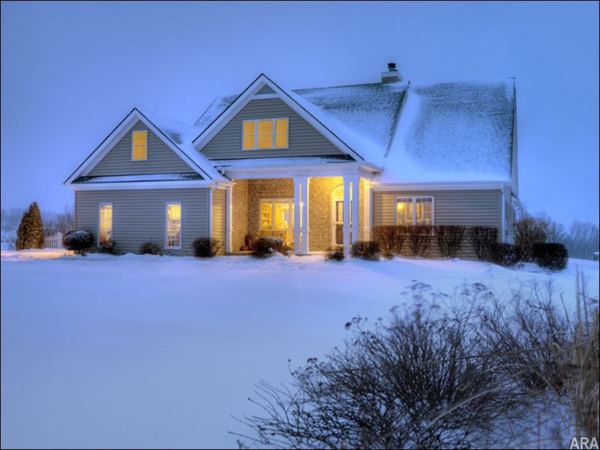The nights are starting to draw in, the air has a damp tinge in the mornings and evenings and the leaves are starting to turn colour and fall from trees.
It’s a sign to start getting your home ready for the Autumn and soon-to-be winter climate and to get prepared for darker and colder days and evenings ahead. Here is a checklist of things to prepare to ensure that you home is winter-proof.

1. Arrange Heating Maintenance
The number one priority at this time of year should be to get your boiler, radiators and heating system checked and also serviced in good time. All too often we tend to forget this vital piece of equipment in our home that is essential for supplying us with heat and hot water during cold winter months. Book in a service now if you haven’t already done so, or better still, take out an annual service and maintenance plan so that you know that your heating system and boiler is in tip-top condition and regularly serviced. If for any reason your boiler breaks down you will also be covered for repair costs and call-out charges. Your boiler and heating system will be working overtime throughout winter so the last thing you want is for it to break down and leave you with no heat or hot water.
You can also bleed your radiators to prevent the build-up of trapped air in your heating system and improve the performance of your central heating overall. Also don’t forget to check your hot water cylinder insulation jacket is in good repair as this will keep your water hotter for longer.
2. Check Pipes
Now is the time to check your plumbing and pipes and lag and insulate them against adverse and cold weather to prevent them from bursting. Burst pipes and the damage caused by water is costly and can be prevented by a few simple checks and measures. Also make sure that any air vents or airbricks are covered in very cold, sub-zero weather to prevent interior pipes located close to walls from freezing. Also make sure you know where your stopcock is located so that in the event of a burst pipe you can quickly locate it and turn your water supply off.
3. Clear Garden Debris
From now until the end of the year, there is a lot of leaf debris, moss and in stormy weather possible tree, bush and plant debris. Keep on top of Autumn garden debris by regularly sweeping and clearing. Leaves will decay if left and be difficult to clear and become slippery and dangerous on garden decking and patios. Prune perennial plants for regrowth next year and also tidy up shrubs and bushes. Over-winter any delicate garden, pot and hanging basket plants that will not survive the cold and frost in your shed, conservatory or greenhouse ready for next year. For overhanging branches near your house, trim these back so that there is no danger of them breaking off in stormy and windy weather.
4. Insulate Your Home
If you haven’t got round to insulating your home then now is the time to do it. Insulating your home will not only conserve your heating and stop heat escaping from your home, it will also save you money on your winter fuel bills and reduce your fuel costs overall. Roof and wall insulation is key to retaining warmth in winter so start getting quotes or do it yourself.
5. Clear Gutters and Downpipes
Gutters and downpipes, especially during Autumn, get cluttered and filled up with debris, moss and leaves. Clear out all of your gutters and downpipes now and regularly during winter so water and rainfall don’t overspill and cause water problems further down the line.
6. Seal Out Draughts
You may well have double-glazed windows and doors in your home, however it’s still working checking for any possible draughts around your home as double-glazing can still let in draughts of air from outside. Use sealants around draughty windows and doors. The gap underneath interior doors can also let in cold air and draughts, so use draught excluders at the foot of all doors to retain heat in rooms. In an older property there is often a draughty area such as the hallway and a front door that lets in cold air. Use a thick curtain hanging above and in front of the door to keep out draughts.
Sonya writes for What House?, a leading new homes portal featuring thousands of new build homes and properties.

